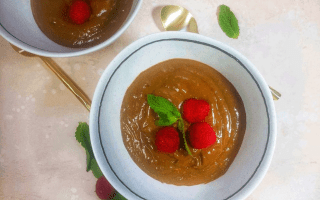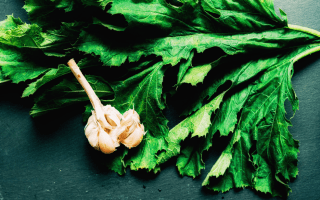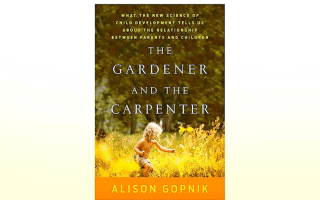We used to joke about our mothers freezing everything. But now that we’re mothers concerned about serving a variety of food while maintaining their nutrients and avoiding waste, we get it. In this Friday FYI, we’ll share what we learned about freezing foods and share some surprising food to keep in the freezer.
Some foods to keep on ice
Pasta, rice and bread
You can store cooked pasta in the freezer stored in airtight containers or freezer bags. Add 1 tablespoon of olive oil for every 8 ounces of pasta to keep it from sticking together. It will keep for about 2 months. To use the frozen pasta, thaw it in the refrigerator and then place it in boiling water to heat. If you freeze pasta with sauce, thaw it in the fridge overnight before heating. If possible, undercook the pasta before freezing.
Place leftover cooked rice in an airtight container and send it to the freezer. While many people microwave frozen rice with a soaking wet paper towel over it, steaming it adds back lost moisture and brings it back to life. Steaming works well for refrigerated cooked rice as well. Also of note, frozen and refrigerated rice has the ideal dryness for making perfect fried rice.
We freeze bread all the time. It’s best to freeze sliced bread in a single layer on a tray or double them up, so it’s easy to pull a pair to make a sandwich. You can also freeze them in breadcrumb form so you’ll never be without.
Dairy products
One of the best ways to freeze hard cheeses is to grate them first. You can also cut it into small pieces before wrapping it in plastic wrap. Unfortunately, if you freeze it in large blocks, the cheese will lose moisture and become crumbly. To defrost the frozen cheese, just transfer it to the fridge the night before you need to use it.
We know someone who moved overseas, and whenever she finds her favorite brand of butter, she stocks up and throws them in the freezer. Keep the butter tasting fresh by keeping it in its original packaging and placing it all in an airtight container. Unsalted butter can keep for 5 months, and salted butter stays fresh for 9.
Produce
You can freeze most vegetables. However, this works only if you plan to cook them later because the freezing process causes them to lose their crispness. As water freezes, it expands and damages its cell walls. Two exceptions worth mentioning are cucumber and lettuce. They both contain a lot of water, so they become mushy and just unappetizing afterward.
Fruits also keep in the freezer, but they usually lose some firmness. However, freezing maintains the flavor and nutrients of most fruits and vegetables for at least 8 months.
Aromatics
When we have leftover fresh herbs, it pains us to think of them going to waste. The good news is that you can freeze them as well. If just the leaves are used (like rosemary or oregano), pluck all the leaves and wash them. Then, pat dry with a paper towel and freeze them in a single layer on a baking sheet. Once frozen, place them in an airtight container or freezer bag. For herbs where you use the whole stem, first trim off the bottom. Then, chop into about 2″ sections before freezing in a single layer on a baking sheet. They aren’t crisp after freezing but are still great for cooking because they retain all their flavor.
Herbs can also be chopped and frozen in olive oil, which works well in dressings, soups, and other cooked dishes. They also look and smell great in ice cubes for summer drinks!
Extra garlic can be packaged and sent to the freezer as well. Freezing maintains its flavor but compromises its firmness. So, frozen garlic is best suited for cooking. Garlic can be stored in the freezer in any number of ways: unpeeled, the whole bulb, in cloves, chopped, puréed, on its own, in water, and in oil. The best way is in oil though because oil prevents oxygen from getting in and breeding bacteria. Make sure you keep it in an airtight container though or your whole freezer will smell like garlic. And, put your airtight container in freezer bags to be safe.
Cut ginger and freeze them in peeled chunks. It just retains a little water during the freezing process, so it tends to sizzle and crackle when used in a stir fry.
Opened pantry goods
Open a box of stock but can’t finish it? Freeze them in these containers, and you’ll have 1/2 cup portions of stock anytime you need them.
You can do the same with wine. Previously frozen wine is safe to drink, but freezing may alter the taste slightly, so it’s better suited for cooking.
Meat
Cooked meat that was previously frozen can be frozen again. It’s best to defrost them in the fridge, but of course, such planning isn’t always possible. When that happens, check out our post for the best way to defrost meat in a hurry.
Some surprising food to keep in the freezer
Fried foods
If you freeze deep-fried food, bake them while they’re still frozen and it’ll maintain its crunchy crust. This can also be done with dishes with a crumb topping. Glazed and unglazed donuts can be defrosted back to life on the counter for a few hours.
Pantry goods
Flour can be kept in the freezer in an airtight container or freezer bag. Scoop out the needed amount and use directly from the freezer. Flour also absorbs odors, so keep the container away from strong-smelling foods.
Unopened yeast stays fresh for up to 2 years when frozen. Once opened, yeast should be refrigerated and will keep 4 months, but it’ll keep in the freezer for up to 6 months.
Nuts and seeds contain a lot of fat, so they tend to go bad quickly. Freezing keeps them fresh for up to 1 year. Spread nuts out in a single layer on a baking sheet and place them in the freezer-similarly, spread seeds in a thin layer on a baking sheet. Once frozen, pour them into an airtight container or freezer bag. This way, they’re not all frozen together in a large mass. Some nuts, like walnuts, are known to absorb other odors, so keep them away from strong-smelling foods.
Eggs
When freezing raw eggs, remove them from their shell first. However, egg yolks will thicken when frozen. To prevent them from turning gelatinous, add about 1/8 teaspoon of salt (for cooking) or sugar (for baking). A great way to batch freeze a dozen eggs is in a muffin tin brushed with olive oil. You can also freeze the yolks and whites separately as well. Defrost them overnight in the refrigerator and use them the same day.
Avocados
The California Avocado Commission details two methods to freeze avocados. After cutting it in half, peel and seed the avocado. Then, brush the two halves with lemon juice and wrap it with plastic wrap without any room for air. Last, place it in an airtight container in the freezer. Or, you can mash it first and mix it with lemon juice, about 1 tablespoon for every 2 avocados. A plastic freezer bag works best with this method because you can squeeze out any excess air. Even better, you can crease it into breakable portions. If you plan to use it for guacamole, you can use lime juice instead, which works out perfectly.
Foods that don’t hold up to the freezing and defrosting process
Dairy
Milk becomes lumpy once thawed, so it’s not suitable for drinking, but it works if you’re going to cook with it. Sour cream also separates after freezing but can be used for cooking as well. For this reason, avoid freezing cream-based soups and sauces as well.
Soft cheeses are high in fat and water, which causes them to defrost into a watery and unappetizing consistency. However, ricotta and cottage cheese can be frozen if you plan to cook it afterward, like in baked pasta or quiche. However, it won’t be suited for recipes calling for fresh ricotta.
Egg whites
Cooked egg whites turn rubbery once frozen.
Produce
Raw potatoes become discolored when thawed. They can even turn black and inedible. However, if you want to store potatoes for later use, you can blanch or roast them prior to freezing.
Freezing alters the flavor of onions, so avoid it when possible.
Miscellaneous food items
Mayonnaise and mayo-based dishes like egg or tuna salad don’t freeze well either. Once defrosted, the mayonnaise will separate and just not behave the same way.
Freezing ruins the molecular structure of gelatin and jelly, so you should avoid it. Once defrosted, they liquify and no longer hold together.
Some tips
Make sure cooked food is cooled and not steaming anymore. Then, place it in the fridge before moving it into the freezer. This intermediate step keeps the temperature in the freezer consistent and keeps the other foods in the freezer from thawing.
Some believe freezer bags are better than airtight containers to maximize freshness because you can squeeze more air out of them.









